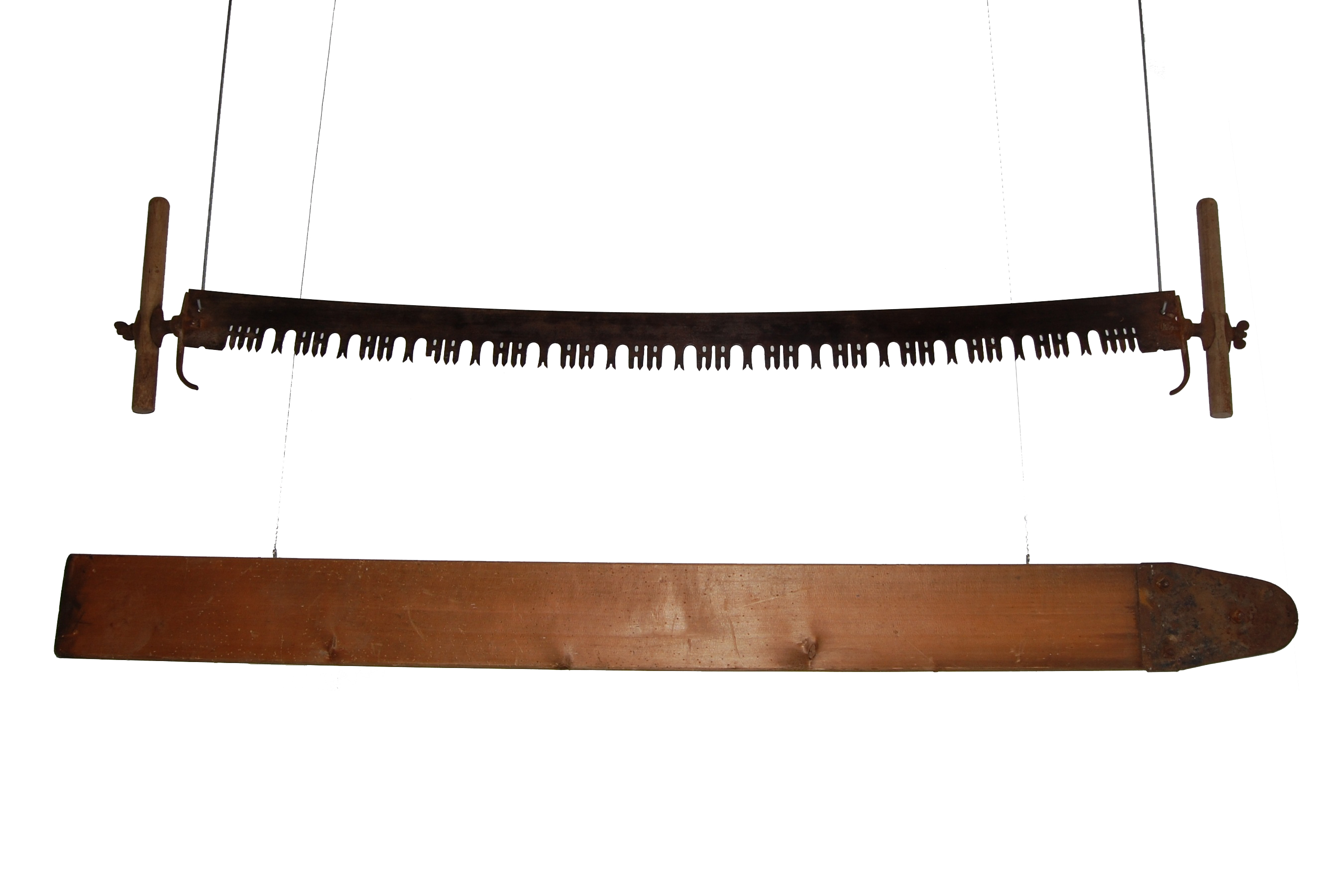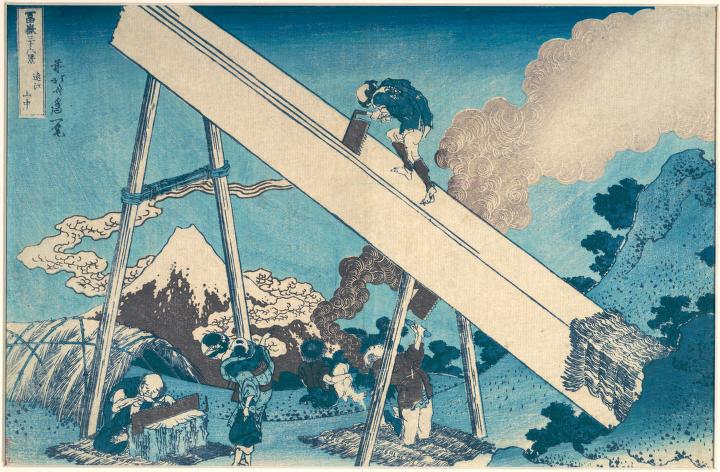|
Underbucking
Underbucking is a type of log bucking where the cuts are made upwards from the lower side of a suspended log. It is the opposite of ''overbucking'', cutting from the top side down. The tool supporting a saw in such a cut is known as the "underbuck". Overview Underbucking is called that because a Sawyer (occupation), sawyer will cut the suspended log from the underside of the log, upwards. Cutting from the top of a suspended log will cause the log to bind on the saw blade as the log sags at the cutting point. Cutting from below will cause the cut to widen as the log sags, avoiding binding on the saw blade. Tool An underbucking tool can be made using an ax driven into the side of the log so that a crosscut saw can be turned upside down. A special tool designed specifically for underbucking facilitates the job of cutting from the ground upwards. The underbuck tool is driven into the section of the log which is considered to be least likely of moving once the cut has been success ... [...More Info...] [...Related Items...] OR: [Wikipedia] [Google] [Baidu] |
Log Bucking
image:Log Buckers with the Madera Sugar Pine Company, 1914.jpg, A crew of log buckers with crosscut saws in 1914. image:Bucker1.jpg, Bucker limbing dead branch stubs with a chainsaw, also known as knot bumping image:Bucker2.jpg, Bucker making a bucking cut with a chainsaw Bucking is the process of cutting a felling, felled and delimbing, delimbed tree into logs. Significant value can be lost by sub-optimal bucking because logs destined for plywood, lumber, and wood pulp, pulp each have their own value and specifications for length, diameter, and defects. Cutting from the top down is ''overbucking'' and from the bottom up is ''underbucking''. In British English, the process is called logging-up or crosscutting. Methods A felled and delimbed tree is cut into logs of standard sizes, a process called ''bucking''. A logger who specialises in this job is a ''buck sawyer (occupation), sawyer''. Bucking may be done in a variety of ways depending on the logging operation. Trees that ha ... [...More Info...] [...Related Items...] OR: [Wikipedia] [Google] [Baidu] |
Crosscut Saw
A crosscut saw (thwart saw) is any saw designed for cutting wood perpendicular to (across) the wood grain. Crosscut saws may be small or large, with small teeth close together for fine work like woodworking or large for coarse work like log bucking, and can be a hand tool or power tool. The cutting edge of each tooth is angled in an alternating pattern. This design allows each tooth to act like a knife edge and slice through the wood in contrast to a rip saw, which tears along the grain, acting like a miniature chisel. Some crosscut saws use special teeth called "rakers" designed to clean out the cut strips of wood from the ''kerf''. Crosscut saws generally have smaller teeth than rip saws. Some saws, such as Japanese saws and those used by the ancient Egyptians, are designed to cut only on the pull stroke. Western saws, on the other hand, are designed to cut on the push stroke. Common features Many crosscut saws have a wooden handle with the return edge at right angles ... [...More Info...] [...Related Items...] OR: [Wikipedia] [Google] [Baidu] |
Sawyer (occupation)
Sawyer is an occupational term referring to someone who saws wood, particularly using a pit saw either in a saw pit or with the log on trestles above ground or operates a sawmill. One such job is the occupation of someone who cuts lumber to length for the consumer market, a task now often done by end users or at lumber and home improvement stores. By Miranda Marquit, Main Street, thestreet.com, May 3, 2010. The term is still widely used in the industry to refer to the operator of a (or still in some limited applications, a [...More Info...] [...Related Items...] OR: [Wikipedia] [Google] [Baidu] |
Logging
Logging is the process of cutting, processing, and moving trees to a location for transport. It may include skidding, on-site processing, and loading of trees or logs onto trucks or skeleton cars. Logging is the beginning of a supply chain that provides raw material for many products societies worldwide use for housing, construction, energy, and consumer paper products. Logging systems are also used to manage forests, reduce the risk of wildfires, and restore ecosystem functions, though their efficiency for these purposes has been challenged. In forestry, the term logging is sometimes used narrowly to describe the logistics of moving wood from the stump to somewhere outside the forest, usually a sawmill or a lumber yard. In common usage, however, the term may cover a range of forestry or silviculture activities. Illegal logging refers to the harvesting, transportation, purchase, or sale of timber in violation of laws. The harvesting procedure itself may be illegal, includin ... [...More Info...] [...Related Items...] OR: [Wikipedia] [Google] [Baidu] |


